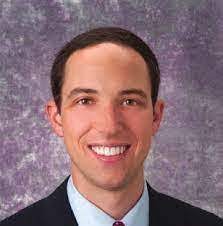
Unity in Research: Dr. Michael Hilton’s Pioneering Approach to Bridging Gaps
In the dynamic landscape of academic research, the traditional boundaries that once defined disciplines are becoming increasingly porous. Dr Michael Hilton, a trailblazer in the field, exemplifies a pioneering approach to collaborative research that goes beyond individual specialties. This exploration delves into Unity in Research: Dr. Michael Hilton’s Pioneering Approach to Bridging Gaps, shedding light on the transformative impact his commitment to interdisciplinary collaboration has on pushing the frontiers of knowledge.
At the core of Dr Michael Hilton collaborative research philosophy is the recognition that many of the most pressing challenges facing society today are complex and multifaceted. Rather than narrowing the scope of investigation, he actively seeks out opportunities to collaborate across disciplines, fostering an environment where diverse perspectives converge to generate innovative solutions.
One notable aspect of Dr. Hilton’s approach is his dedication to breaking down silos in academia. He envisions a research landscape where the boundaries between traditional disciplines are permeable, allowing for the cross-pollination of ideas and methodologies. By creating bridges between fields such as medicine, technology, and social sciences, Dr. Hilton maximizes the potential for groundbreaking discoveries at the intersections of knowledge.
Interdisciplinary collaboration, as championed by Dr Michael Hilton, extends beyond theoretical frameworks. It manifests in the form of collaborative research projects that tackle real-world issues. Whether it’s addressing the ethical implications of emerging technologies, exploring the social determinants of health, or integrating data science into medical diagnostics, his research endeavors exemplify a holistic and collaborative approach to problem-solving.
In a recent symposium on collaborative research, Dr. Hilton shared his perspective on the power of unity in academia. Research is a collective endeavor that thrives on the diversity of thought and expertise. By embracing collaboration, we unlock the potential for transformative discoveries that transcend the limitations of any single discipline, he remarked. The symposium served as a platform for researchers from disparate fields to come together, share insights, and explore collaborative opportunities.
One key impact of Dr. Hilton’s collaborative approach is the translation of research findings into practical applications. By bridging gaps between disciplines, he ensures that the knowledge generated in the laboratory has tangible implications for addressing real-world challenges. From innovative healthcare delivery models to technology-driven solutions, his research output is a testament to the transformative potential of interdisciplinary collaboration.
Dr. Hilton’s commitment to collaborative research extends beyond academic circles. He actively engages with industry partners, policymakers, and community stakeholders, recognizing that the most effective solutions arise from a synergy of expertise. By fostering these external collaborations, he ensures that research outcomes are not confined to academic journals but contribute to meaningful advancements in various sectors.
In conclusion, Unity in Research: Dr. Michael Hilton’s Pioneering Approach to Bridging Gaps is more than a title; it encapsulates a philosophy that calls for a collective and collaborative approach to the pursuit of knowledge. Dr. Hilton’s pioneering spirit serves as an inspiration for researchers and institutions seeking to break free from the confines of disciplinary boundaries, fostering a research landscape where unity becomes the catalyst for transformative discoveries that bridge gaps, create connections, and push the boundaries of what is possible in the pursuit of knowledge.